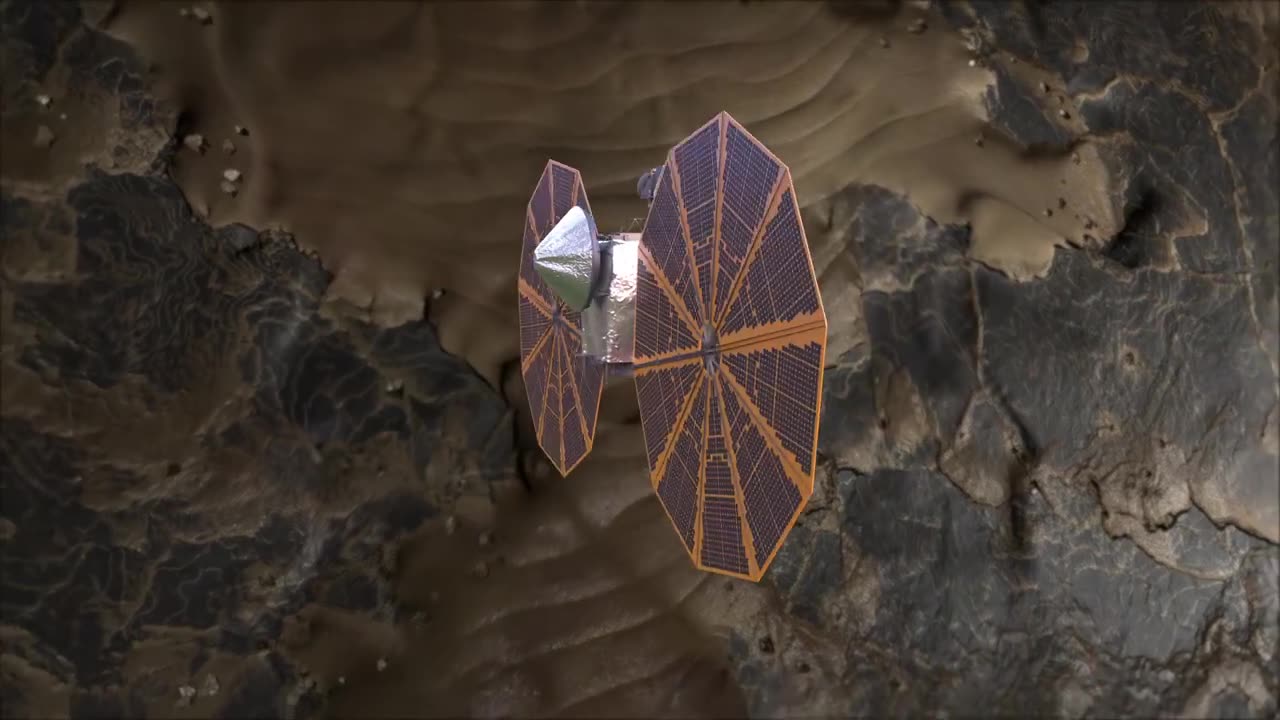Premium Only Content

Lucy Mission Overview: Journey to Explore the Trojan Asteroids
The Lucy mission is a NASA spacecraft mission with the primary objective of exploring the Trojan asteroids, a unique and ancient population of asteroids that share Jupiter's orbit around the Sun. Here's a more detailed overview of the mission's journey and objectives:
1. Mission Goals:
The Lucy mission aims to understand the origins and evolution of our solar system by studying the Trojan asteroids. These asteroids are believed to be remnants from the early solar system and offer valuable insights into its formation.
2. Spacecraft and Instruments:
The Lucy spacecraft is equipped with a suite of sophisticated scientific instruments designed to capture detailed data about the Trojan asteroids.
Its instruments include high-resolution cameras, spectrometers, and a dust analyzer, allowing for the comprehensive study of these celestial bodies.
3. Target Destination:
Lucy's primary target is the Trojan A group of asteroids, which are located ahead of Jupiter in its orbit. This group is of particular interest for scientific study.
The mission will encounter and study a total of seven different Trojan asteroids during its journey.
4. Trajectory and Flybys:
Lucy follows a carefully planned trajectory, which includes gravitational assists from Earth and Jupiter, to reach its target destinations efficiently.
The spacecraft makes use of Earth flybys to gain momentum and change its trajectory to visit multiple Trojan asteroids.
It also performs a flyby of Jupiter, using the giant planet's gravity to further adjust its course.
5. Science Objectives:
The scientific objectives of the Lucy mission include characterizing the geology, surface composition, and physical properties of the Trojan asteroids.
Scientists aim to determine their origins, understand their diversity, and investigate how their orbits have evolved over billions of years.
6. Discovery Potential:
Lucy has the potential to make groundbreaking discoveries about the Trojan asteroids, shedding light on the conditions and processes that shaped the early solar system.
It could also provide insights into the role of Jupiter in influencing the distribution and dynamics of these asteroids.
7. Launch and Duration:
Lucy was launched on October 16, 2021, from Cape Canaveral Space Launch Complex 41, using an Atlas V rocket.
The mission is expected to span approximately 12 years, including its journey to the Trojan asteroids and the scientific observations it will conduct.
8. Collaborative Effort:
The Lucy mission is a collaborative effort led by NASA, with significant contributions from institutions like the Southwest Research Institute (SwRI) and the Goddard Space Flight Center.
9. Legacy and Significance:
Named after the famous fossilized human ancestor "Lucy," the mission symbolizes humanity's quest to uncover ancient secrets about the solar system's history and formation.
-
 LIVE
LIVE
LFA TV
10 hours agoLFA TV ALL DAY STREAM - THURSDAY 9/4/25
1,399 watching -
 13:43
13:43
The Kevin Trudeau Show Limitless
1 day agoClassified File 3 | Kevin Trudeau EXPOSES Secret Society Brainwave Training
69.9K10 -
 1:09:23
1:09:23
The HotSeat
2 hours agoTrump’s Parade = Mocked, China’s Parade = Praised: Leftist Hypocrisy EXPOSED
14.4K2 -
 1:57:29
1:57:29
The Quartering
4 hours agoRFK Jr Goes NUCLEAR, Horrible Tomb Raider News, Anti-White Male Propaganda
95K24 -
 LIVE
LIVE
Dr Disrespect
6 hours ago🔴LIVE: Hell Is Us Launch - DR DISRESPECT’s First Look at the Scariest Game of 2025!
1,075 watching -
 11:17
11:17
Dr. Nick Zyrowski
29 days agoTop 10 No CARB No SUGAR Foods That Will Change Your Health
22.3K4 -
 LIVE
LIVE
Chrissie Mayr
2 days agoChrissie Mayr's Content Hotel at The Villa Roma! Anthony Cumia, Dave Landau, Violet
45 watching -
![[Ep 741] RFK Jr. Hits Back at Rabid Dems | Portland Antifa Terrorists | The Evil That is the Left](https://1a-1791.com/video/fww1/bb/s8/1/W/U/c/f/WUcfz.0kob-small-Ep-741-RFK-Jr.-Hits-Back-at.jpg) LIVE
LIVE
The Nunn Report - w/ Dan Nunn
2 hours ago[Ep 741] RFK Jr. Hits Back at Rabid Dems | Portland Antifa Terrorists | The Evil That is the Left
165 watching -
 1:52:45
1:52:45
John Burk
4 hours agoThe Texas Hemp ban, DOJ removing guns from trans, and more.
13.7K3 -
 1:05:37
1:05:37
LindellTV
3 hours agoMike Lindell Debates Democrats in the Streets of DC
24.5K2